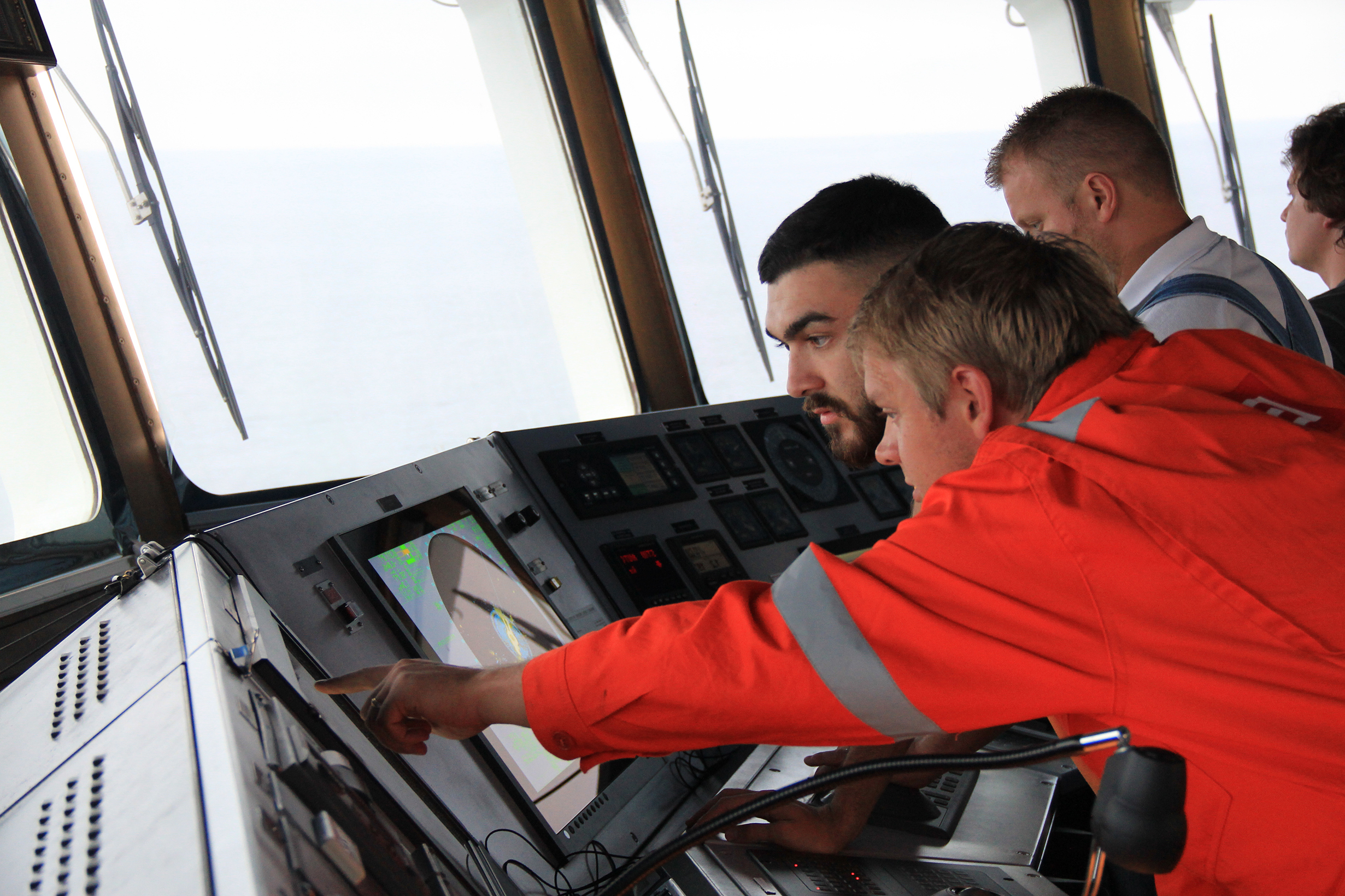
DP automation: a smart new system for greater safety
The new organization of the Dynamic Positioning, which combines smart technology with a change in organization, will mean greater safety for crews, as well as lower costs for BOURBON. BOURBON is now testing it on a contract for BP in Trinidad and Tobago. One more step towards operational intelligence.
Dynamic positioning
Core component of BOURBON strategy in Smart shipping, DP – Dynamic Positioning - is an automated heading and position control system. Whether it’s used to remain in position for a cargo operation or maintaining a heading and speed for a cable laying operation, the DP system has the ability to react at any moment to information transmitted by sensors regarding the impact of wind on the hull, draft or an external force generated by towing, a submarine cable being installed, or an underwater pipe during a pipe-laying operation. The system is operated by DP officers, who constantly monitor the system on the bridge and apply its recommendations.
Even though Officers are experienced and highly skilled, human error cannot always be avoided, whether a mechanical or computational mistake, or a moment of distraction or inattention. Bearing in mind that the cause of around 80% of collisions and near-misses in close proximity to offshore facilities is human error, particularly failure in application of DP Operational procedures, it was urgent to act to improve safety, both for BOURBON vessels and for other assets in vicinity.
By employing smart technology, redefining bridge ergonomics and improving DP contingency procedures, the DP automation application, developed by BOURBON alongside partners Kongsberg Maritime and Bureau Veritas, continuously monitors a vast array of parameters, which are fed into the system by multiple sensors, to actively optimize adjustments to positioning and guiding operators in non-normal situations.
By introducing semi-autonomous technology, automation applications will result in safer and more effective operations.SHAM PARASRAMMARINE TEAM LEAD, BP TRINIDAD & TOBAGO LOGISTICS
A range of advantages
The increased level of automation will primarily result in improved safety, particularly within the 500-metre safety zone, but it also offers additional advantages. Namely, because the system regulates engines and propellers power output, feedback data provided by sensors may be used as input to predictive maintenance program, to improve operating efficiency. The optimized operation of the engines also means less maintenance and lower fuel consumption, a benefit that is appreciated by the customer.
A further advantage of the new system is particularly useful to the vessel’s crew in terms of manning. With the new system, apart from the captain, mate and specialized DP Officer, a fourth crew member will also be able to operate the system. Primarily a mechanic or electrician, this person will receive specific training allowing him to double as a junior DP operator.
The DP automation application is currently being tested on one of the company’s most modern vessels, the Bourbon Explorer 508, servicing a BP drilling platform in Trinidad. BP was motivated to take part in the pilot project, as Sham Parasram, Marine Team Lead in the Logistics department at BP Trinidad and Tobago, explains: “BP is in favour of increasing the use of semi-autonomous technology. It offers not only in greater efficiency but also and, most importantly, greater safety. By reducing the human factor, this automation application will reduce the risk of accidents. We are also expecting to see reduced diesel consumption, which will reduce our costs.”
The next stage of development
This application will be connected to an onshore control center, which will centralize data and enable a high level of real-time supervision. This will make it easier to pool data from the whole fleet to enhance the data available for decision-making on each vessel.
A drive for modernization
Thanks to the advent of the digital revolution, this type of remote monitoring is increasingly prevalent in all parts of the oil and gas industry – it mirrors a system called Well Advisor currently being rolled out by BP to monitor and supervise drilling and extraction operations, for instance. Its aim is to enable better decisions to be made.
BP also uses other digital applications to help increase operating efficiency. They have introduced an e-manifest which is a software used when cargo is loaded onto boats. Another new system, developed by BP’s Trinidad and Tobago logistics team, is an electronic version of the checklist that has to be completed before a vessel can enter the 500-metre zone. This can now be carried out rapidly on a tablet, avoiding the need for paper documents.
“BP is engaged on a drive for modernization,” remarks Sham Parasram. “As far as we are concerned, the more smart technology and advanced applications that can be used, the safer and more effective all our operations will be. By collaborating with BOURBON Offshore and its partners on the automation applications project, we are helping to transform the industry.”


